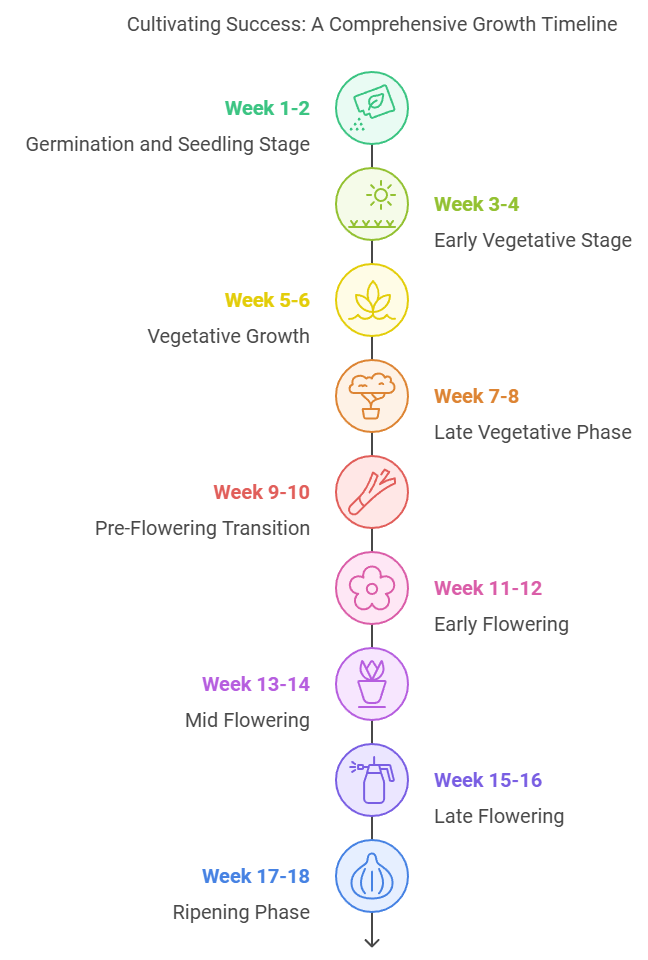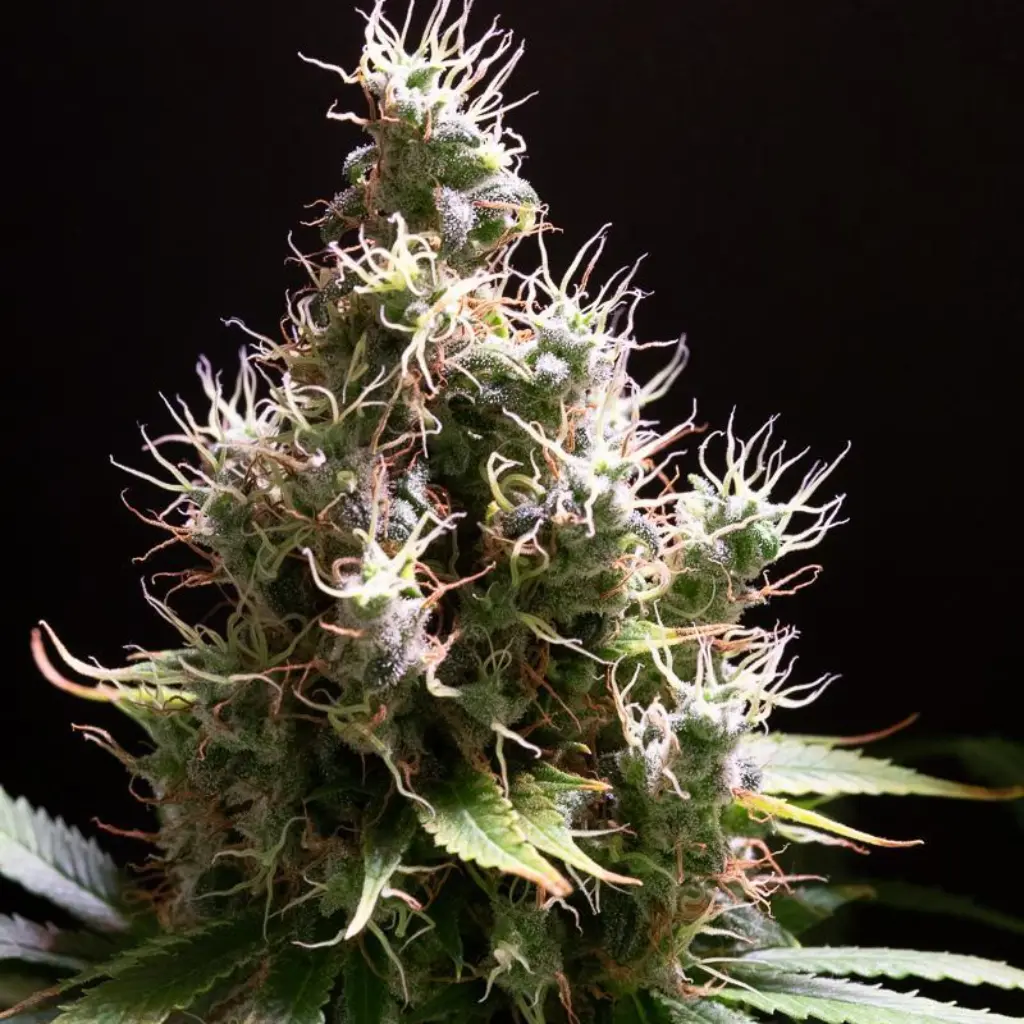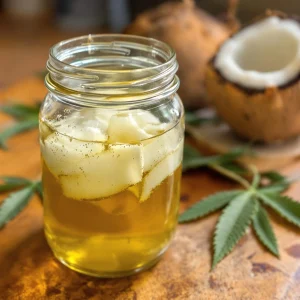Arjan’s Haze 3 strain is a sativa-dominant strain known for its energetic high and sweet, fruity aroma. Originating from the iconic Green House Seed Company, this variety offers growers a compact plant with impressive yields. It is popular for its high THC levels, which typically range between 13% and 20%, making it perfect for consumers seeking a light yet euphoric effect. The blend of tropical fruit flavors and citrus notes makes it an enjoyable experience for users.
The manageable size of Arjan’s Haze 3 strain makes it an excellent choice for both indoor and outdoor cultivation. This strain is well-suited to growers looking for a potent sativa that doesn’t require towering vertical growth. Its rapid flowering time and resilience to mold add to its appeal, making this strain a favorite among cannabis cultivators who want to maximize their yield in a shorter period.
Environmental Requirements
It thrives best in a warm and humid environment. To ensure optimal growth, maintain temperatures between 22°C and 28°C (72°F to 82°F) during the day. Nighttime temperatures can be slightly cooler, ideally staying above 18°C (65°F). Humidity levels during the vegetative stage should be around 60%, gradually reducing to 40% as the plant transitions into the flowering phase.
Lighting is another key component. For indoor grows, use high-quality LED lights to replicate the sunlight Arjan’s Haze 3 strain requires. Outdoors, this strain prefers at least eight hours of direct sunlight daily. A consistent 18/6 light cycle during the vegetative phase, followed by 12/12 during flowering, will help maximize its potential. Additionally, good airflow around the plants is critical in preventing mold and ensuring a healthy environment.
Setting Up The Growing Space
Creating the ideal growing space for Arjan’s Haze 3 strain can significantly impact the final yield. Start by ensuring your area is equipped with adjustable lighting, ventilation fans, and temperature control systems. Indoor growers will benefit from using reflective materials on the walls to increase light intensity, providing the plant with more energy for growth.
Consider using a grow tent for optimal control over temperature, humidity, and light. Outdoor cultivators should choose a spot with plenty of direct sunlight while also ensuring there is some wind protection. A well-prepared soil bed enriched with organic nutrients is ideal for ensuring that strain has all it needs to thrive from seedling to flowering.
Indoor Cannabis Cultivation
Growing Arjan’s Haze 3 strain indoors allows you to maintain full control over the growing environment. This strain is compact, making it perfect for smaller indoor setups. LED grow lights or HPS lamps are ideal for maintaining strong and consistent light during both vegetative and flowering stages. Keep the lights about 18-24 inches above the plants to prevent overheating while still providing ample light.
Their benefits from a hydroponic setup if you aim for maximum yield, but soil is equally effective for flavor preservation. Make sure the soil is rich in organic materials and that you monitor pH levels, ideally keeping the range between 6.0 to 6.5. Regular pruning is essential to enhance light penetration to lower nodes, which helps maximize bud development.
Outdoor Cannabis Cultivation
Outdoor cultivation of Arjan’s Haze 3 strain requires a warm climate similar to Mediterranean regions. Choose a sunny spot that gets at least 8 hours of direct sunlight each day. It has a natural resistance to pests and mold, which makes outdoor cultivation relatively easy compared to more delicate strains. Prepare the soil with compost or organic fertilizers to ensure that the plant has a constant supply of nutrients.
Outdoor growers should also consider wind protection to prevent stress or physical damage to the plant. Using stakes or netting can help stabilize the plant, especially in windy conditions. This sativa-dominant strain is known for its tall structure outdoors, so topping or bending techniques can be used to control its height and encourage a more robust canopy.

Propagation and Germination of Arjan’s Haze 3 strain
Germinating this seeds is a simple process. Start by soaking the seeds in water for about 12 to 24 hours until they sink. Once they sink, transfer them to a damp paper towel, fold it over the seeds, and place them in a dark, warm area. Within 24 to 72 hours, the seeds should sprout taproots, signaling they’re ready for planting.
After germination, plant the sprouted seeds in small pots filled with nutrient-rich soil or a seed-starting mix. Keep the medium consistently moist but avoid waterlogging, as excess moisture can lead to root rot. Maintain temperatures between 22°C and 25°C to encourage healthy root development during this stage. Once the seedlings develop their first few sets of true leaves, they can be transplanted into larger containers or outdoor beds.
Vegetative Phase of Arjan’s Haze 3 strain
During the vegetative phase, this strain focuses on root and foliage development. This phase typically lasts between 4 to 6 weeks, during which the plant should be kept on an 18/6 light cycle. Indoor growers can use LED or HID lights, adjusting the height to ensure the plant receives enough energy without burning. Ensuring consistent moisture levels and humidity (around 60%) is key.
Feeding Arjan’s Haze 3 strain during this phase should focus on high nitrogen content to promote vigorous growth. Consider using a balanced nutrient mix designed for cannabis, with macro and micronutrients that support healthy leaf and stem formation. Training techniques such as topping and LST (low-stress training) can be highly effective in increasing light exposure and ultimately boosting yields.
Flowering Phase of Arjan’s Haze 3 strain
The flowering phase of this strain begins when the light cycle shifts to 12 hours of light and 12 hours of darkness. This phase lasts between 8 to 10 weeks, during which the plant will start producing buds covered in resin. Lower the humidity to 40-45% to prevent mold and enhance resin production. During flowering, potassium and phosphorus should dominate the nutrient mix.
Pay special attention to temperature and airflow during the flowering phase. Keeping temperatures between 20°C to 26°C and ensuring sufficient airflow will help prevent issues like bud rot and pests. Watch the pistils closely; when about 70% have turned an amber color, the buds are approaching peak ripeness and are ready for harvest.
Cannabis Fertilization and Nutrition
Fertilization is crucial to ensure Arjan’s Haze 3 strain reaches its full potential. During the vegetative stage, provide a nitrogen-rich fertilizer to support leaf and stem growth. As the plant transitions to the flowering stage, reduce nitrogen and increase potassium and phosphorus to promote bud formation. Organic fertilizers such as bat guano, fish emulsion, or compost tea can be used to enrich the growing medium.
Supplementing micronutrients like calcium, magnesium, and iron is also important for preventing deficiencies. Keep an eye out for signs of nutrient imbalances, such as yellowing leaves or stunted growth, and adjust feeding schedules accordingly. Flushing the plants with pure water two weeks before harvest helps to remove any residual nutrients, enhancing the flavor and smoothness of the final product.
Pest and Disease Control for Cannabis Growing
Pests and diseases can affect even the most carefully cultivated this plants. Common pests include spider mites, aphids, and whiteflies. To mitigate these issues, regularly inspect the plants for any visible signs of infestation, like spots on leaves or webs. Use neem oil or insecticidal soap as a preventive measure.
Diseases like powdery mildew and bud rot can also pose challenges. Ensuring proper airflow and controlling humidity levels can significantly reduce these risks. Applying organic fungicides at the first sign of disease can help manage outbreaks before they spread too far, keeping your plants healthy and thriving.
Prevention
Preventing pest infestations and diseases begins with maintaining a clean growing environment. Sterilize all tools before use, and ensure the growing area is free from debris where pests might hide. Using sticky traps can help identify the presence of pests early on, while companion planting (such as marigolds) can deter unwanted insects naturally.
Another preventive approach is to use beneficial insects like ladybugs, which feed on common cannabis pests. These natural predators are highly effective in keeping pest populations under control without introducing chemicals to the grow space. Prevention is the most effective strategy to avoid the headache of dealing with an infestation after it takes hold.
Corrective Actions
If an infestation or disease does occur, act swiftly. For pests, apply insecticidal soap or neem oil directly to affected areas. For more severe infestations, consider using a biological pesticide. In the case of fungal issues, remove affected leaves immediately and reduce humidity levels. Ensuring your plants are not overcrowded will help limit the spread of any diseases.
Chemical treatments should be a last resort due to the potential impact on plant health and the final product. Organic options are often sufficient for keeping pests and diseases at bay while maintaining the quality of this strain. Regular monitoring and early intervention are key components of an effective pest and disease control strategy.
Harvesting and Curing for Cannabis Growing
It is ready for harvest when the buds are dense, and at least 70% of the pistils have turned amber. To harvest, cut the branches and hang them upside down in a dark, well-ventilated space. The drying process should take 7 to 10 days, ensuring that the buds are not too dry or moist.
After drying, curing is essential to enhance flavor and potency. Place the buds in airtight jars and store them in a cool, dark place, opening the jars daily for the first week to release moisture. The curing process should continue for at least 2 to 4 weeks for best results. Proper curing enhances the terpene profile, offering a richer aroma and smoother smoke.
Is Arjan’s Haze 3 strain Indica or Sativa?
It is a sativa-dominant strain, known for its uplifting and energizing effects. It provides users with a clear-headed high that’s perfect for daytime use. The sativa influence also makes it ideal for those looking to boost creativity, focus, or social interactions.
The structure of the plant reflects its sativa heritage, featuring tall growth and long, thin leaves. This growth pattern makes it well-suited for those who enjoy working with sativa strains that have shorter flowering times and more compact growth than many traditional sativas.
Advantages of Growing Arjan’s Haze 3 strain
One major advantage of growing Arjan’s Haze 3 strain is its compact size. Unlike many other sativa strains, it doesn’t grow excessively tall, making it manageable for both indoor and outdoor growers. The plant’s natural resistance to mold and pests is another benefit, reducing the maintenance required for a successful grow.
Another advantage is the strain’s rapid flowering time. With a flowering period of only 8 to 10 weeks, growers can achieve multiple harvests per year, especially when cultivating indoors. This allows for higher turnover and a steady supply of high-quality buds.
Disadvantages of Growing Arjan’s Haze 3 strain
One potential drawback of growing this strain is its sensitivity to extreme temperatures. If exposed to very cold or very hot conditions, growth may be stunted, and yields could be lower. Maintaining optimal environmental controls is key to ensuring this strain thrives.
Additionally, although the strain is naturally resistant to many pests and diseases, it still requires vigilant monitoring, especially during the flowering phase. Issues like powdery mildew can still affect the plant if humidity is not carefully managed, particularly in dense indoor grows.
Problems in Cultivating Arjan’s Haze 3 strain
Cultivating this strain can come with challenges, particularly in terms of maintaining the ideal environmental conditions. This strain thrives in a stable climate, and any drastic changes can stress the plant, leading to lower yields or quality issues. Growers should invest in good environmental controls to keep temperature and humidity at ideal levels.
Nutrient imbalances can also pose problems. Too much nitrogen during flowering can inhibit bud growth, leading to leafy plants with fewer flowers. Careful attention to nutrient schedules and the use of cannabis-specific fertilizers can help avoid this common pitfall.
Advanced Pest Control for Cannabis Growing
Advanced pest control for this strain involves integrating biological pest management strategies. Introducing predatory insects like lacewings and parasitic wasps can be an effective way to control pest populations naturally. These beneficial insects feed on common pests without damaging the cannabis plants, providing a chemical-free pest control solution.
Additionally, maintaining a diverse garden with companion plants can reduce pest pressure. Herbs like basil and mint deter pests, while marigolds can help repel nematodes. By creating a balanced ecosystem, the need for chemical pesticides is minimized, and the overall health of the cannabis plants is improved.
Week-by-Week Growth Plan
Week 1-2 (Germination and Seedling Stage): Germinate seeds in a damp paper towel and transplant sprouted seeds into soil. Maintain humidity at 70% and keep temperatures between 22-25°C.
Week 3-4 (Early Vegetative Stage): Increase light intensity to promote leaf growth. Begin with a light nutrient mix high in nitrogen. Keep humidity around 60%.
Week 5-6 (Vegetative Growth): Perform topping to encourage lateral growth. Introduce LST (low-stress training) to increase light penetration. Monitor for pests and maintain consistent watering.
Week 7-8 (Late Vegetative Phase): Transition the plant to a larger pot if needed. Maintain a steady 18/6 light cycle. Ensure nutrient mix supports robust foliage development.
Week 9-10 (Pre-Flowering Transition): Shift the light cycle to 12/12. Reduce nitrogen slightly and increase potassium and phosphorus. Prepare the grow area for humidity control.
Week 11-12 (Early Flowering): Bud sites begin to form. Lower humidity to 50%. Support branches if necessary, as buds start to gain weight. Watch for nutrient deficiencies.
Week 13-14 (Mid Flowering): Increase phosphorus intake to enhance bud development. Maintain temperatures between 20-26°C. Defoliate to improve airflow and light distribution.
Week 15-16 (Late Flowering): Reduce watering slightly to stress the plant and increase resin production. Continue reducing humidity to avoid mold.
Week 17-18 (Ripening Phase): Flush with pure water. Monitor trichomes closely; when they turn milky with some amber, the plant is ready for harvest.

FAQs
What is the THC percentage of Arjan’s Haze 3 strain?
The THC percentage of this strain typically ranges from 13% to 20%, providing a balanced yet uplifting high.
How long does it take for Arjan’s Haze 3 strain to flower?
This strain usually takes about 8 to 10 weeks to complete the flowering phase.
What flavors and terpenes are present in Arjan’s Haze 3 strain?
This strain features fruity, tropical flavors with hints of citrus. It has a complex terpene profile that enhances its uplifting effects.
Can Arjan’s Haze 3 strain be grown both indoors and outdoors?
Yes, it can be grown indoors or outdoors. It adapts well to both environments, provided its environmental requirements are met.
What are the medicinal benefits of Arjan’s Haze 3 strain?
This strain is known for its uplifting effects, which can help alleviate stress, depression, and fatigue. Its clear-headed high makes it ideal for daytime use without sedation.





